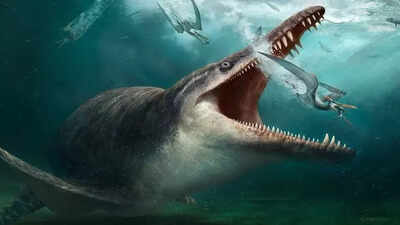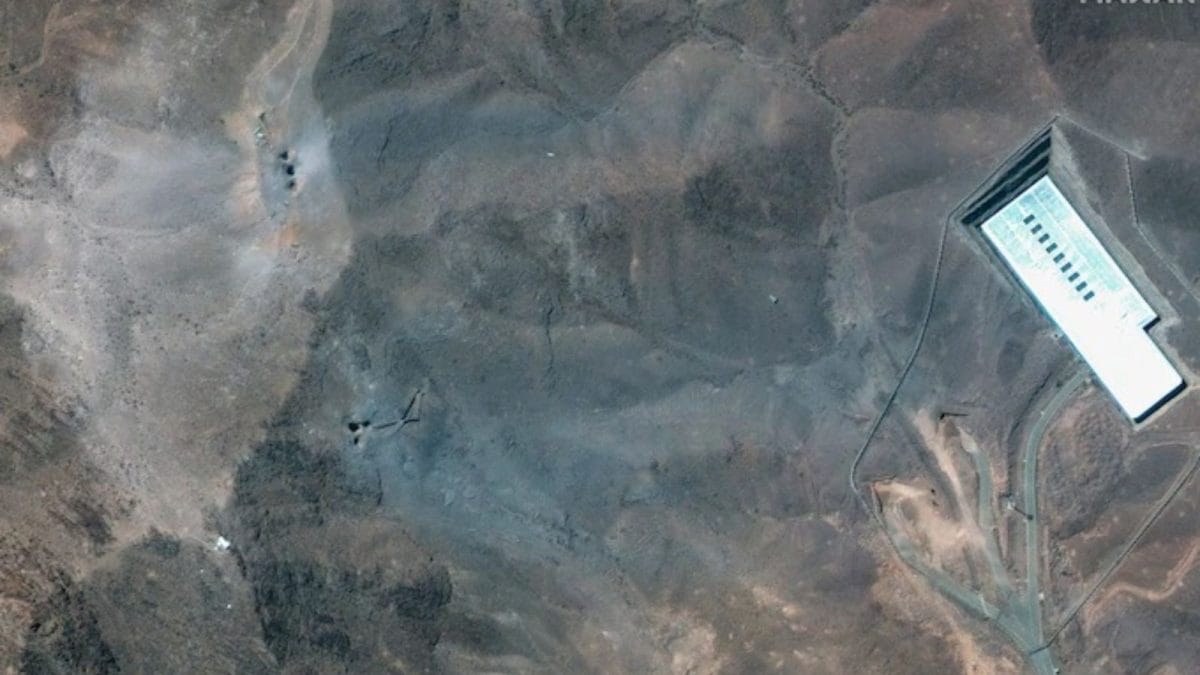ARTICLE AD BOX

If you think today’s saltwater crocodiles are frightening, imagine something even bigger, faster, and stronger swimming beneath you in a sea that once covered most of inland Australia.Meet Kronosaurus queenslandicus, a marine reptile that ruled the Eromanga Sea over 100 million years ago. With a skull stretching up to 2.3 metres and a jaw measuring 1.6 metres, this apex predator had a bite twice as powerful as today’s strongest crocodiles.
Kronosaurus: A jaw-dropping discovery
In 2015, a 1.6 m-long lower jawbone of Kronosaurus was unearthed by a farmer in Queensland, the most complete jaw of the species ever found. Palaeontologists studying it confirmed that this massive marine reptile packed a bite strong enough to crush shells, snap through thick bones, and tear into other marine reptiles.
And with teeth up to 30 cm long, it didn’t just bite, it shredded. According to Guinness World Records, this gives Kronosaurus the strongest known bite force of any marine reptile in history.
Kronosaurus and its pliosaur cousins didn’t just look scary, they were among the most powerful predators in history. With jaws that could crush bone with up to 48,000 Newtons of force, they out-bit even today’s saltwater crocodiles by more than double.
Bigger than a crocodile, built for speed
According to Australian Geographic, while saltwater crocodiles grow to about 6–7 metres and weigh up to a tonne, Kronosaurus could reach up to 10–11 metres in length and weigh an estimated 11 tonnes. But it wasn’t just about size , Kronosaurus had four powerful 2-metre-long flippers, helping it rocket through prehistoric seas like a torpedo.It likely ambushed prey from below, feasting on giant squid, ammonites, turtles, and even other massive marine reptiles like plesiosaurs and ichthyosaurs.
In fact, fossilised bite marks found on an elasmosaur skull (another marine reptile) suggest Kronosaurus wasn’t picky about its prey, if it moved, it was lunch.
Australia’s ancient sea monster—Kronosaurus
During the Cretaceous period, much of what we now know as Queensland was submerged beneath the Eromanga Sea—a vast inland ocean that split Australia in two. While dinosaurs roamed the land, creatures like Kronosaurus dominated the water.This terrifying titan was first named in 1924 by Heber Longman of the Queensland Museum, after a fragment of jaw was discovered near Hughenden.
Later, a full skeleton collected by Harvard researchers in 1932 helped build our modern image of this marine beast, though that specimen was initially reconstructed a bit too generously at 12 metres long (thanks to a few extra vertebrae).
How scientists see Kronosaurus today
The species Kronosaurus queenslandicus was first formally described in 1924 by Australian museum director Albert Heber Longman, who named it after the Greek Titan Cronus (Kronos) and the state of Queensland, where its fossils were discovered.
The original find—a large fragment of lower jaw—was impressive in size but limited in scope. Even so, by comparing it to related marine predators, scientists estimated the creature reached up to 12 metres in length.Today, thanks to continued fossil discoveries and advances in palaeontology, scientists are certain that Kronosaurus was no prehistoric myth. With its torpedo-shaped body, enormous skull, and a bite force nearly double that of a saltwater crocodile, it ranks among the deadliest marine predators to have ever lived. “In terms of size, they are some of the biggest,” says Leslie Noe, palaeontologist at the University of the Andes in Bogotá, Colombia, describing Kronosaurus’ fearsome proportions.Part shark, part crocodile, and pure sea monster—Kronosaurus was an apex predator you definitely wouldn’t want to swim with.Also Read | Why a muslim devotee is remembered in Lord Jagannath's Rath Yatra



.png)
.png)
.png)
















 6 hours ago
5
6 hours ago
5









 English (US) ·
English (US) ·